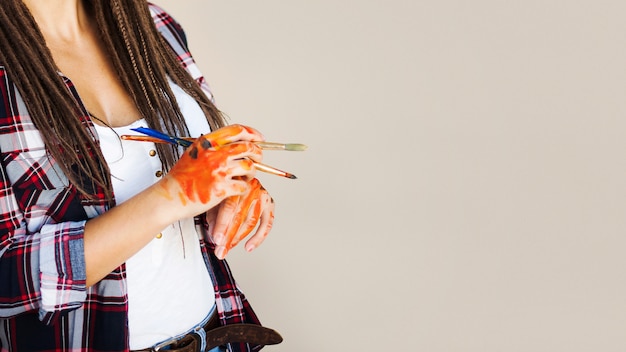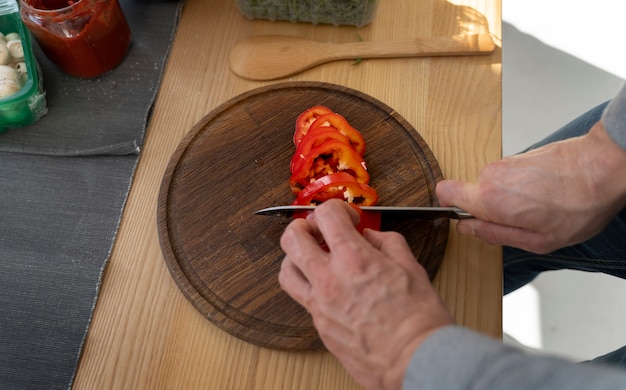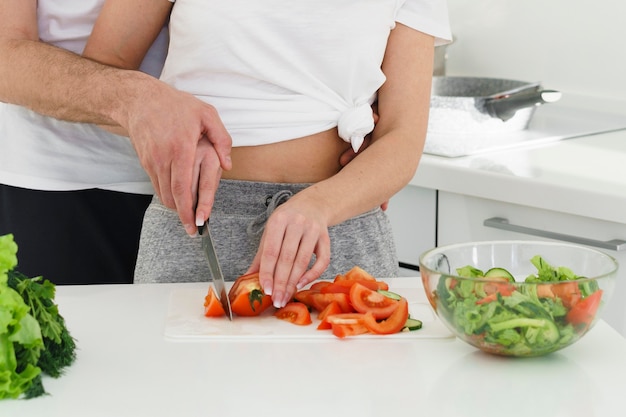As a senior article editor, I've written about countless culinary topics, but few things are as universally loved and universally mishandled as shrimp. These little crustaceans are a true delight, boasting a delicate sweetness and firm texture, but they can be easily overcooked, turning rubbery and tough. Believe me, I've been there! Remember that dreadful time I tried to impress my in-laws with a fancy shrimp scampi only to end up with a dish that was more rubbery than a bouncy castle? It wasn't pretty, let's just say that.
The good news is, mastering shrimp cooking is surprisingly easy. It's all about understanding the basics of timing and technique, and a little bit of practice. So, grab your apron, put on your favorite playlist, and let's dive in!
Part 1: Understanding Shrimp Basics

The Science of Shrimp Cooking
Shrimp are essentially little bundles of protein, with a delicate texture that can easily turn tough if overcooked. Unlike other seafood, they don't require extensive cooking times. In fact, they're best enjoyed when cooked just until they turn opaque and slightly curled, often just a few minutes. It's all about achieving that sweet spot between raw and overdone.
Think of it like this: Imagine cooking a steak. You wouldn't throw it in a pan for an hour, would you? No, you'd sear it quickly to achieve a perfect crust and juicy interior. Shrimp are similar. A quick cook, done right, will result in a juicy, flavorful bite.
types of shrimp
The first step to cooking perfect shrimp is understanding the different types available. Each type has its own unique texture and flavor, and knowing which one you're working with will help you choose the right cooking method and time. Here's a quick rundown:
- Whiteleg Shrimp: These are the most common type found in supermarkets and are generally considered a good all-rounder. They have a mild flavour and a firm texture, making them versatile for many dishes.
- Tiger Shrimp: These have a distinctive tiger-like pattern on their shell and a slightly sweeter flavour than whiteleg shrimp. They are also more expensive, and you'll find they have a firmer texture than their whiteleg counterparts.
- Pink Shrimp: These have a delicate, slightly sweet flavour and a tender texture, perfect for delicate dishes or where you want the shrimp to be the star. They are often sold frozen, so keep an eye out for quality when choosing them.
- Spot Prawns: These are larger than most shrimp varieties, with a richer flavour and a firmer texture. They're a real treat, and are often prized for their sweetness and firm bite.
Remember, the size of shrimp can also vary. Larger shrimp will generally take longer to cook than smaller shrimp, so keep that in mind as you're planning your meal.
Fresh or Frozen?
fresh shrimp are undoubtedly the most desirable, boasting a delightful sweet flavour and tender texture. However, they can be harder to come by and have a shorter shelf life. frozen shrimp are a great alternative, offering convenience and a longer shelf life. Just remember to thaw them properly before cooking to ensure even cooking.
When thawing frozen shrimp, never use hot water, as this can cook the shrimp unevenly. Instead, defrost them in the refrigerator overnight or in a bowl of cold water, changing the water every 30 minutes to ensure even thawing.
Part 2: cooking techniques

Now that you understand the basics of shrimp, let's dive into the actual cooking methods. There are numerous ways to cook shrimp, each with its own unique advantages. Here are a few popular options:
Pan-Frying
This is a simple and quick method that delivers perfectly cooked shrimp with a delicious crust. It's a great way to achieve a crispy, flavorful shrimp, and it works well for both small and large shrimp. Here's how:
- Heat a pan over medium heat. Add a tablespoon or two of oil or butter to the pan.
- Add the shrimp to the pan, making sure not to overcrowd it. You want enough room for the shrimp to cook evenly.
- Cook for about 2-3 minutes per side, or until they turn pink and opaque. You can tell they're done when they become firm to the touch and the flesh is no longer translucent.
- Remove the shrimp from the pan and serve immediately.
You can add seasonings like garlic, chilli flakes, or herbs to create a flavorful dish. For example, a simple addition of minced garlic and a pinch of red pepper flakes can turn your shrimp into a delicious appetizer.
Grilling
For an outdoor summer feast, there's nothing quite like grilled shrimp. The smoky flavor from the grill brings out the best in shrimp. Here's how to do it:
- Preheat your grill to medium heat.
- Thread the shrimp onto skewers, leaving a little space between each shrimp for even cooking.
- Brush the shrimp with olive oil and your favorite seasonings.
- Grill the shrimp for about 2-3 minutes per side, or until they turn pink and opaque.
You can brush them with a marinade for extra flavour. Try a simple marinade of olive oil, lemon juice, garlic, and herbs. For a spicier kick, try adding some red pepper flakes.
Baking
If you're looking for a fuss-free method, baking is a great option. It's a hands-off method that delivers consistently cooked shrimp. Here's how to do it:
- Preheat your oven to 400°F (200°C).
- Toss the shrimp with olive oil, seasonings, and lemon juice. Use a good quality olive oil, as this will add flavor to the shrimp.
- Spread the shrimp on a baking sheet, making sure not to overcrowd it.
- Bake for about 8-10 minutes, or until they turn pink and opaque.
Boiling
Boiling is a simple method for cooking large quantities of shrimp. It's a quick and easy way to cook shrimp if you're making a large batch for a crowd. Here's how to do it:
- Bring a pot of salted water to a boil. Make sure the water is well-salted, as this will season the shrimp.
- Add the shrimp to the boiling water. Don't overcrowd the pot.
- Cook for about 2-3 minutes, or until they turn pink and opaque.
- Remove the shrimp from the water and serve immediately.
This method is perfect for adding shrimp to soups, stews, and other dishes.
Part 3: Determining Cooking Time

Now, let's get to the heart of the matter: how long do you actually cook shrimp? Well, there's no single answer that fits all situations. The cooking time for shrimp will vary depending on:
- Size: Larger shrimp will take longer to cook than smaller shrimp. A good rule of thumb is to add an extra minute or two for larger shrimp.
- Cooking method: Different cooking methods require different cooking times. For example, pan-frying shrimp will take less time than baking them.
- Quantity: Cooking a large amount of shrimp may require slightly longer cooking time. If you're cooking a lot of shrimp, you may want to cook them in batches to ensure they cook evenly.
General Guidelines
Here are some general guidelines for cooking shrimp:
| shrimp size | Cooking Time (minutes) |
|---|---|
| Small (16-20 per pound) | 2-3 |
| Medium (11-15 per pound) | 3-4 |
| Large (8-10 per pound) | 4-5 |
| Extra Large (6-7 per pound) | 5-6 |
These times are just a starting point, and it's always best to check the shrimp for doneness. The shrimp should be pink and opaque, and the flesh should be firm but not rubbery. If the shrimp are overcooked, they will be tough and rubbery.
Don't be afraid to adjust the cooking time based on the specific size and thickness of your shrimp. A little practice will help you perfect your timing.
Part 4: Doneness and Overcooking
Okay, I know what you're thinking: "How can I tell if my shrimp are actually cooked?" It's a valid concern. We've all been there, staring at the shrimp in our pan, wondering if we should flip them, hoping they haven't turned into rubbery discs. Don't worry, it's easier than you think. Here's a quick rundown of how to check for doneness:
The Colour Test
The most obvious indicator of doneness is the colour. Raw shrimp have a translucent, grayish colour. Once cooked, they will turn an opaque, pink or reddish colour. This colour change indicates that the protein has been properly cooked.
The Touch Test
Another way to check for doneness is to gently press on the shrimp with your fingers. If the flesh is firm and bouncy, it's cooked through. If it feels mushy or soft, it's still raw. Remember, you don't want the shrimp to feel hard or rubbery, just firm.
The Twist Test
For larger shrimp, you can use the twist test. Gently twist the tail of the shrimp. If it easily separates from the body, it's cooked through. If it's still firmly attached, it needs more cooking time.
Overcooked Shrimp
As I've mentioned before, overcooked shrimp can be a real tragedy. So, how can you avoid this culinary disaster? The key is to pay attention and not overcook. Overcooked shrimp will be rubbery and tough, and they will have a slightly off-putting taste. It's a good idea to check the shrimp for doneness frequently, especially towards the end of cooking. Once they're pink and opaque, they're ready to go.
Part 5: Common Mistakes
Let's face it, even seasoned cooks make mistakes. When it comes to shrimp, there are a few common pitfalls that you'll want to avoid. Here are a few things to keep in mind:
Overcrowding the Pan
One common mistake is overcrowding the pan. If you cram too much shrimp into the pan, it will prevent them from cooking evenly and can lead to overcooked shrimp. The shrimp will steam rather than sear, resulting in a soggy, mushy texture. Give the shrimp enough room to cook properly, and don't be afraid to cook them in batches if necessary.
Not Using Enough Heat
Another common mistake is not using enough heat. Shrimp cook quickly, so it's important to use a hot pan or grill. If the heat is too low, the shrimp will steam rather than cook, resulting in a soggy, mushy texture. A hot pan or grill will help to sear the shrimp quickly and evenly, resulting in a crispy, flavorful exterior.
Adding Too Much Salt
Shrimp are delicate and don't need a lot of seasoning. Adding too much salt can actually overpower their delicate flavour. Just a pinch of salt is usually enough. Remember, you can always add more salt at the end of cooking, but you can't take it away.
Over-Seasoning
As tempting as it might be, resist the urge to add too much seasoning. Shrimp are best enjoyed with minimal seasoning, allowing their natural flavour to shine. You can always add a squeeze of lemon juice or a sprinkle of herbs at the end for a burst of flavour. Remember, sometimes less is more.
Overcooking
I know I mentioned this earlier, but it's worth repeating. Overcooking shrimp is a cardinal sin in the kitchen. It's easy to overcook shrimp, so pay close attention to the cooking time and check for doneness frequently. Once the shrimp turn pink and opaque, they're done. Don't overcook them or they will become rubbery and tough.
Part 6: Tips for Success
Now that you're armed with the knowledge of what to avoid, let's talk about the secrets to success. Here are a few tips to help you cook perfect shrimp every time:
thaw frozen shrimp Properly
If you're using frozen shrimp, it's essential to thaw them properly before cooking. The best way to thaw shrimp is in the refrigerator overnight. You can also thaw them in a bowl of cold water, but make sure to change the water every 30 minutes to prevent the shrimp from absorbing too much water. Once thawed, pat the shrimp dry with paper towels to remove excess moisture.
Pat Shrimp Dry
Before cooking, pat the shrimp dry with paper towels. This will help prevent them from steaming in the pan, resulting in a more even cook. The moisture on the shrimp can prevent them from browning properly and will lead to a less flavorful shrimp.
Use a Hot Pan
As mentioned before, use a hot pan to cook shrimp. This will help them develop a nice sear and prevent them from sticking to the pan. A hot pan will ensure that the shrimp cook quickly and evenly.
Don't Overcrowd the Pan
Give the shrimp enough space to cook evenly. If you're cooking a large amount of shrimp, cook them in batches. This will ensure that the shrimp cook evenly and don't steam in the pan.
Check for Doneness Frequently
Shrimp cook quickly, so check for doneness frequently. You can use the colour test, the touch test, or the twist test to determine if they're cooked through. Don't be afraid to check the shrimp often, especially towards the end of cooking.
Season Simply
Shrimp are best enjoyed with minimal seasoning. A pinch of salt and pepper is usually enough. You can always add a squeeze of lemon juice or a sprinkle of herbs at the end for a burst of flavour. Remember, the goal is to let the natural flavour of the shrimp shine.
Don't Overcook
Once the shrimp turn pink and opaque, they're cooked through. Don't overcook them or they will become rubbery and tough. Overcooked shrimp are a real culinary tragedy, so pay attention to the cooking time and check for doneness frequently.
Part 7: Serving Suggestions
Now, let's talk about the fun part: serving your perfectly cooked shrimp. Here are a few ideas for delicious shrimp dishes:
Shrimp Scampi
This classic Italian dish is a perfect showcase for fresh shrimp. Shrimp are sautéed in garlic, white wine, and butter, then tossed with pasta. It's a simple, flavorful dish that's perfect for a weeknight meal.
Grilled Shrimp Skewers
Grilled shrimp skewers are a perfect summer meal. Marinate the shrimp in a mixture of olive oil, lemon juice, and herbs, then skewer them and grill until they're cooked through. These skewers are a great way to enjoy shrimp outdoors. Serve them with a simple salad and a side of rice for a complete meal.
shrimp tacos
Shrimp tacos are a delicious and easy way to enjoy shrimp. Sauté the shrimp with onions, peppers, and your favourite spices, then serve them in warm tortillas with your favourite toppings. Try using fresh cilantro, lime juice, and avocado for a flavorful and refreshing taco.
Shrimp Stir-Fry
Shrimp stir-fry is a quick and easy meal. Sauté the shrimp with vegetables and your favourite sauce. Serve over rice or noodles. A simple stir-fry with shrimp, broccoli, and a sweet and sour sauce is a quick and easy meal.
Shrimp Soup
Shrimp soup is a comforting and flavorful dish. Simmer shrimp with vegetables, broth, and seasonings. You can add rice, noodles, or dumplings for a heartier meal. Try a creamy shrimp soup with a hint of coconut milk for a tropical twist.
Part 8: FAQs
Here are some frequently asked questions about cooking shrimp:
What is the best way to defrost shrimp?
The best way to defrost shrimp is in the refrigerator overnight. You can also defrost them in a bowl of cold water, but make sure to change the water every 30 minutes to prevent the shrimp from absorbing too much water. Never defrost shrimp at room temperature, as this can promote the growth of bacteria.
What happens if I overcook shrimp?
Overcooked shrimp will be rubbery and tough, and they will have a slightly off-putting taste. If you overcook shrimp, there's not much you can do to salvage them. It's best to pay attention to the cooking time and check for doneness frequently.
Can I reuse the shrimp cooking water?
You can reuse the shrimp cooking water to make a delicious broth or stock. Just strain it through a fine-mesh sieve to remove any impurities. The shrimp cooking water is full of flavor and can be used to add depth to soups, stews, or sauces.
What are some good shrimp seasonings?
Shrimp are best enjoyed with minimal seasoning. A pinch of salt and pepper is usually enough. You can also add a squeeze of lemon juice, a sprinkle of herbs, or a dash of hot sauce. Get creative with your seasoning! Some other good options include garlic powder, paprika, cumin, and oregano.
What are some good shrimp recipes?
There are countless shrimp recipes available online and in cookbooks. Some popular recipes include shrimp scampi, grilled shrimp skewers, shrimp tacos, shrimp stir-fry, and shrimp soup. Don't be afraid to experiment and find your own favourite recipes! There are so many ways to enjoy shrimp, so have fun exploring different options.
Everyone is watching

Corn on the Cob: The Ultimate Guide to Perfectly Cooked Ears
Healthy MealsAh, corn on the cob. Just the name evokes images of sunny days, barbecues, and that sweet, juicy flavour that ...

Perfect Pork Roast Oven Cooking Time: A Guide to Delicious Results
Healthy MealsThere's something truly satisfying about a perfectly roasted pork. The aroma alone is enough to make your mout...

Scallops: The Ultimate Guide to Perfect Cooking
Healthy MealsAh, scallops. Those delicate, sweet, and utterly delicious morsels of the sea. They hold a special place in my...

Ham Cooking Time: How Long to Bake, Smoke, or Boil a Delicious Ham
Healthy MealsAh, ham. It's a classic, isn't it? A real crowd-pleaser, especially around holidays. And when done right, it'...

Spaghetti Squash: The Ultimate Guide to Cooking and Serving
Healthy MealsRemember that time you saw spaghetti squash at the supermarket, looking all bumpy and strange, and thought, "W...
